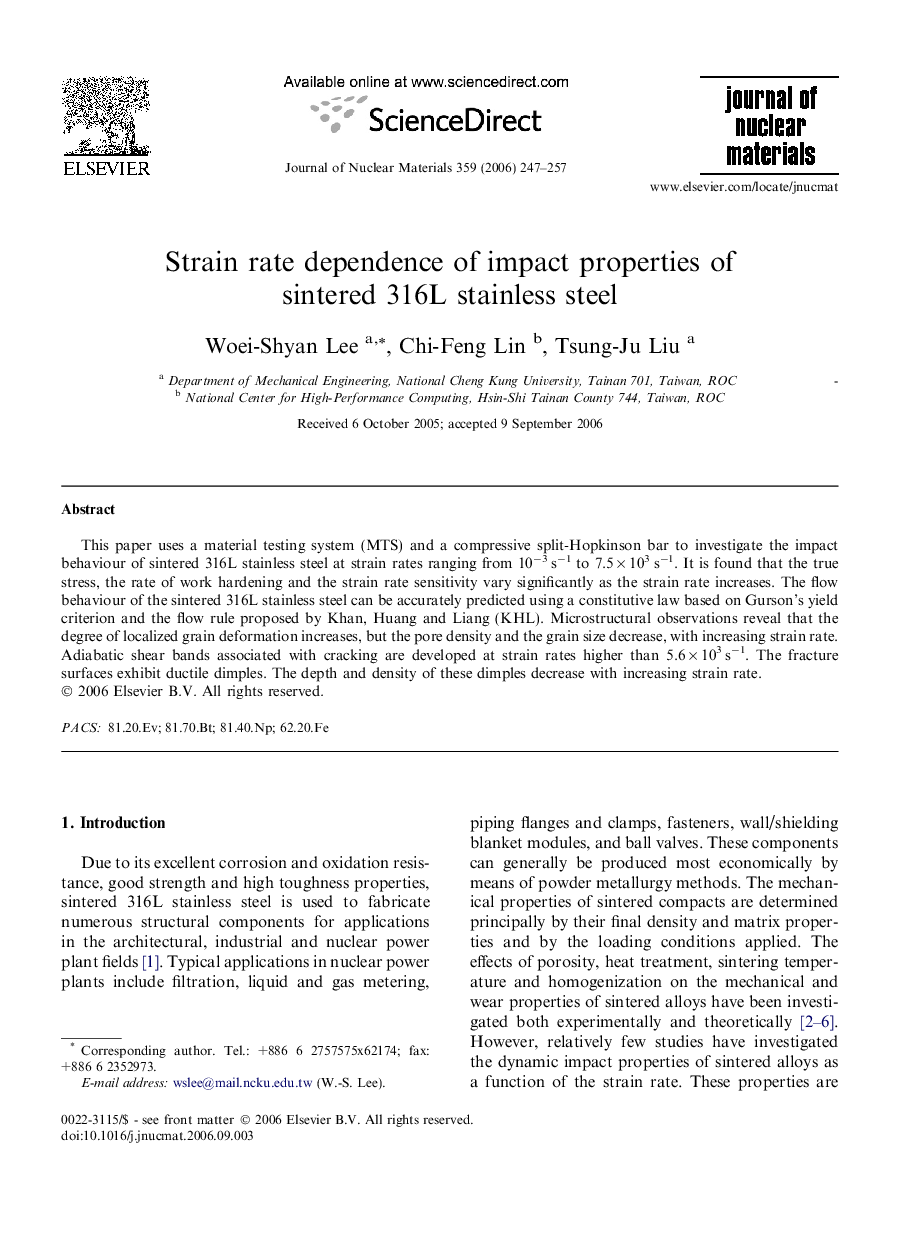| Article ID | Journal | Published Year | Pages | File Type |
|---|---|---|---|---|
| 1569633 | Journal of Nuclear Materials | 2006 | 11 Pages |
This paper uses a material testing system (MTS) and a compressive split-Hopkinson bar to investigate the impact behaviour of sintered 316L stainless steel at strain rates ranging from 10−3 s−1 to 7.5 × 103 s−1. It is found that the true stress, the rate of work hardening and the strain rate sensitivity vary significantly as the strain rate increases. The flow behaviour of the sintered 316L stainless steel can be accurately predicted using a constitutive law based on Gurson’s yield criterion and the flow rule proposed by Khan, Huang and Liang (KHL). Microstructural observations reveal that the degree of localized grain deformation increases, but the pore density and the grain size decrease, with increasing strain rate. Adiabatic shear bands associated with cracking are developed at strain rates higher than 5.6 × 103 s−1. The fracture surfaces exhibit ductile dimples. The depth and density of these dimples decrease with increasing strain rate.
